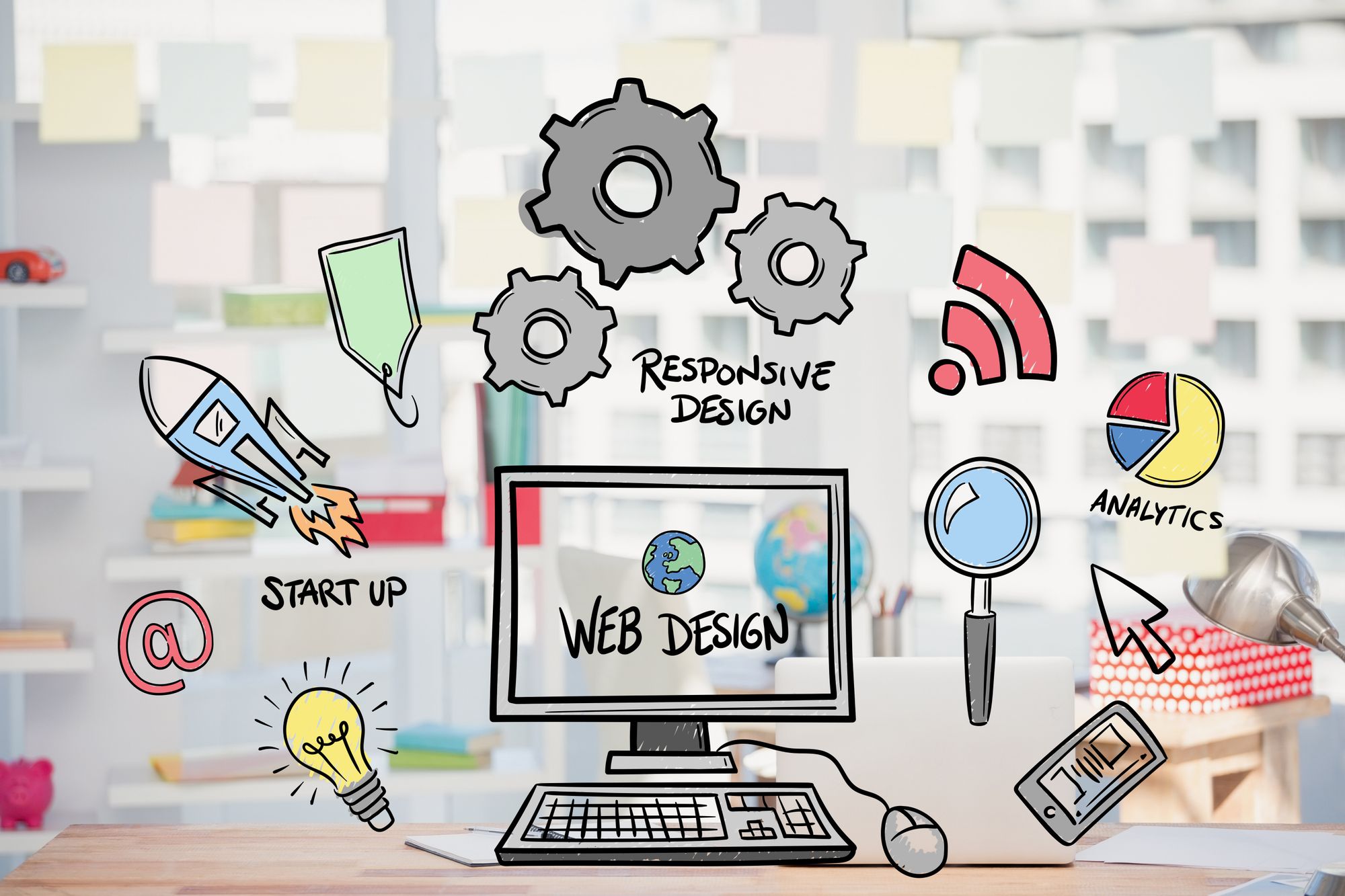Creative Website Design Solutions for Modern and Engaging Internet Sites
In the realm of web style, the quest of contemporary and appealing remedies has actually come to be increasingly essential for businesses intending to record customer interest. By integrating bold color plans, interactive elements, and responsive layouts, developers can develop experiences that not only reverberate with customers yet additionally enhance brand name identity.
Welcoming Vibrant Color Pattern
In internet layout, the tactical use of strong color schemes can significantly boost customer involvement and brand identification. By utilizing vibrant hues, designers can create aesthetically striking internet sites that capture focus and cultivate a memorable experience. A well-chosen shade scheme not only reflects a firm's values yet also stimulates details feelings that can affect customer behavior.
Bold colors can be utilized to lead users' attention to crucial elements such as contact us to action, enhancing conversion rates. Utilizing contrasting shades for buttons and links can make these aspects stand out, prompting users to connect even more readily. Furthermore, a natural shade scheme throughout the website reinforces brand acknowledgment, creating a sense of knowledge and count on amongst visitors.
Nevertheless, it is critical to balance vibrant colors with appropriate white space to avoid overwhelming customers. Effective use typography additionally enhances strong colors, ensuring readability while preserving aesthetic allure. Ultimately, embracing bold color design in internet style not just boosts aesthetic quality but additionally plays an integral role in accomplishing calculated organization objectives, making it an important consideration for contemporary web development.

Utilizing Interactive Components
Interactive elements are essential in modern-day website design, as they substantially boost customer involvement and create a more dynamic surfing experience. By incorporating attributes such as animations, hover impacts, and clickable elements, web sites can motivate individuals to check out web content a lot more extensively and return for future brows through.

Micro-interactions, such as subtle computer animations when a button is clicked or a kind is submitted, can likewise improve the user experience by providing immediate feedback. These tiny information can make the internet site really feel more responsive and active, fostering a feeling of link between users and the site.
In addition, gamification aspects, such as rewards for finishing particular activities, can inspire individuals to engage with the content extra deeply. By attentively incorporating these interactive elements, internet designers can develop a remarkable and engaging on-line experience that reverberates with individuals and urges them to return.
Implementing Receptive Layout
Applying receptive layout is vital in today's multi-device landscape, making certain that internet sites offer an ideal watching experience across numerous screen sizes. As customers increasingly access the web via smartphones, tablets, and desktop computers, a one-size-fits-all strategy is no more feasible. Responsive design enables smooth navigation and interaction, adjusting design and content to fit the gadget being utilized.
Trick principles of responsive style include liquid grids, adaptable images, and media inquiries. Liquid grids make use of loved one units, such as percentages, instead of taken care of pixels, making it possible for elements to resize proportionately. Versatile pictures range within their consisting of aspects, avoiding overflow and preserving aesthetic honesty. Media questions facilitate the application of different styles based on the gadget's attributes, such as size, elevation, or resolution, permitting designers to tailor the customer experience properly.
In addition, responsive layout boosts SEO performance, as online search engine favor mobile-friendly websites. By implementing responsive index layout, services not only boost user fulfillment and interaction but likewise enhance their reach in a competitive electronic landscape. As modern technology proceeds to develop, adopting receptive style has become a fundamental technique for over here any type of modern and interesting web site.
Incorporating Multimedia Material
Multimedia material plays an important duty in creating engaging and dynamic internet experiences that catch customers' attention and boost understanding. By incorporating text, photos, audio, and video, web sites can use a richer narrative that attract numerous learning styles and choices. This assimilation not just bolsters customer involvement but likewise help in sharing intricate concepts succinctly.
Incorporating high-quality pictures and infographics can break up textual material, making it more digestible. Video clip tutorials and discussions can give thorough insights that fixed content may not fully interact. Audio components, such as podcasts or background songs, can additionally enhance the environment of a site, creating a more immersive experience.
Additionally, the critical use of multimedia can enhance search engine optimization performance, as internet search engine favor varied content types, enhancing visibility. It is crucial to make sure that multimedia components do not prevent web page lots times, as this can lead to user frustration. By balancing multimedia combination with performance factors to consider, internet designers can create visually attractive and functional sites that resonate with check my reference users, cultivating a much deeper link and motivating return visits.
Focusing On Individual Experience

To accomplish an optimal user experience, designers must focus on several essential principles. Clear telephone calls to action, legible typography, and organized content guide individuals, minimizing cognitive lots.
Additionally, integrating customer feedback right into the layout procedure is important. Routine screening with real customers aids determine pain factors and areas for renovation, allowing for repetitive enhancements. Inevitably, prioritizing UX not just raises user fulfillment yet also drives engagement and conversion rates, making it a crucial component of modern-day web design approaches. By placing customers at the facility of style initiatives, websites can develop lasting, favorable impacts that motivate return gos to.
Conclusion
Finally, modern-day web style remedies that emphasize bold color pattern, interactive components, responsive layout, and multimedia material significantly improve customer engagement and contentment. Prioritizing customer experience through clear formats and constant comments further contributes to enhanced conversion prices. By adopting these methods, websites can effectively captivate visitors and reinforce brand identity, eventually bring about a more vibrant and appealing on the internet presence. The integration of these layout principles is crucial for attaining contemporary website design purposes.